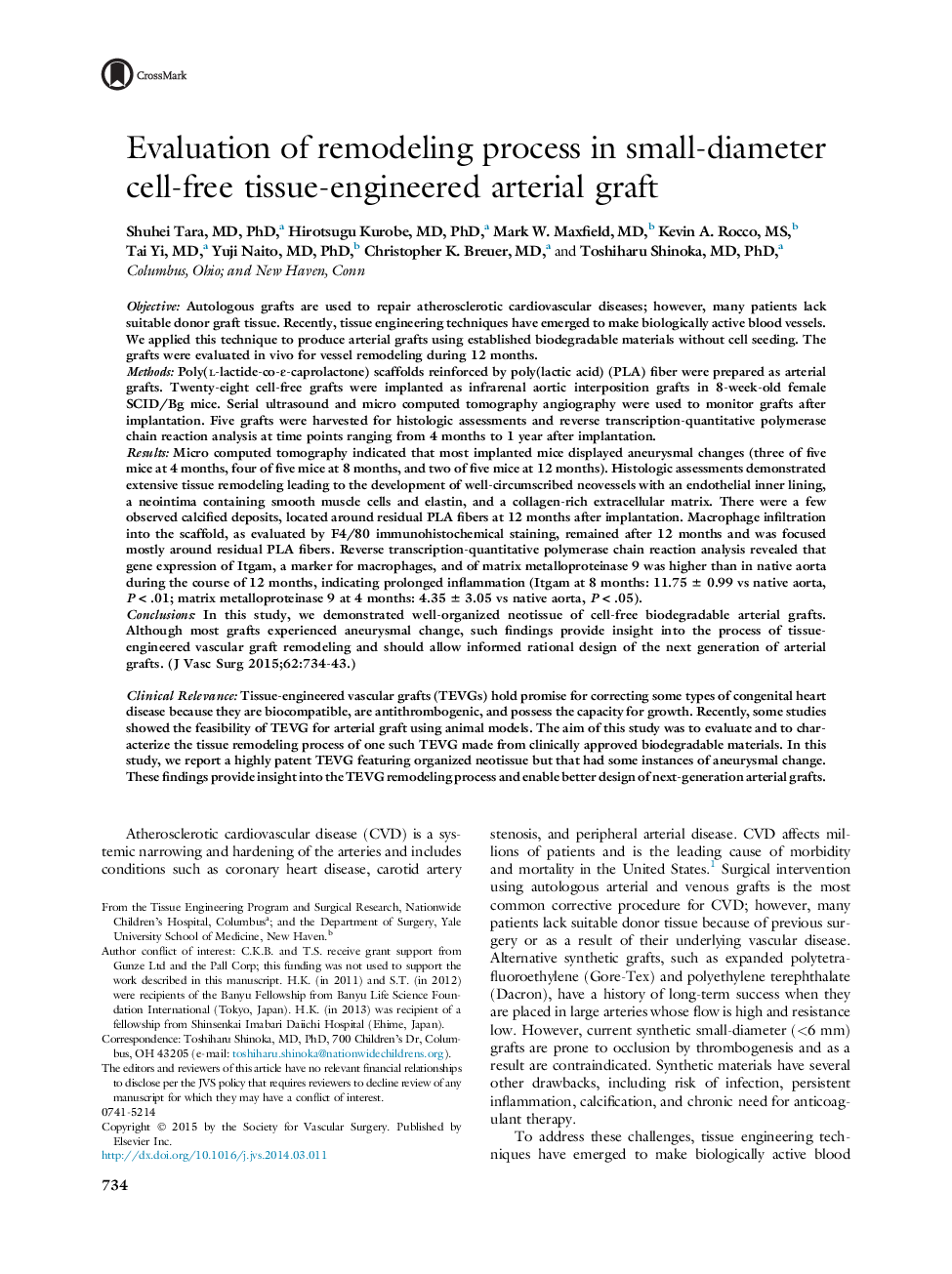| کد مقاله | کد نشریه | سال انتشار | مقاله انگلیسی | نسخه تمام متن |
|---|---|---|---|---|
| 2988488 | 1179821 | 2015 | 10 صفحه PDF | دانلود رایگان |
ObjectiveAutologous grafts are used to repair atherosclerotic cardiovascular diseases; however, many patients lack suitable donor graft tissue. Recently, tissue engineering techniques have emerged to make biologically active blood vessels. We applied this technique to produce arterial grafts using established biodegradable materials without cell seeding. The grafts were evaluated in vivo for vessel remodeling during 12 months.MethodsPoly(l-lactide-co-ε-caprolactone) scaffolds reinforced by poly(lactic acid) (PLA) fiber were prepared as arterial grafts. Twenty-eight cell-free grafts were implanted as infrarenal aortic interposition grafts in 8-week-old female SCID/Bg mice. Serial ultrasound and micro computed tomography angiography were used to monitor grafts after implantation. Five grafts were harvested for histologic assessments and reverse transcription-quantitative polymerase chain reaction analysis at time points ranging from 4 months to 1 year after implantation.ResultsMicro computed tomography indicated that most implanted mice displayed aneurysmal changes (three of five mice at 4 months, four of five mice at 8 months, and two of five mice at 12 months). Histologic assessments demonstrated extensive tissue remodeling leading to the development of well-circumscribed neovessels with an endothelial inner lining, a neointima containing smooth muscle cells and elastin, and a collagen-rich extracellular matrix. There were a few observed calcified deposits, located around residual PLA fibers at 12 months after implantation. Macrophage infiltration into the scaffold, as evaluated by F4/80 immunohistochemical staining, remained after 12 months and was focused mostly around residual PLA fibers. Reverse transcription-quantitative polymerase chain reaction analysis revealed that gene expression of Itgam, a marker for macrophages, and of matrix metalloproteinase 9 was higher than in native aorta during the course of 12 months, indicating prolonged inflammation (Itgam at 8 months: 11.75 ± 0.99 vs native aorta, P < .01; matrix metalloproteinase 9 at 4 months: 4.35 ± 3.05 vs native aorta, P < .05).ConclusionsIn this study, we demonstrated well-organized neotissue of cell-free biodegradable arterial grafts. Although most grafts experienced aneurysmal change, such findings provide insight into the process of tissue-engineered vascular graft remodeling and should allow informed rational design of the next generation of arterial grafts.
Clinical RelevanceTissue-engineered vascular grafts (TEVGs) hold promise for correcting some types of congenital heart disease because they are biocompatible, are antithrombogenic, and possess the capacity for growth. Recently, some studies showed the feasibility of TEVG for arterial graft using animal models. The aim of this study was to evaluate and to characterize the tissue remodeling process of one such TEVG made from clinically approved biodegradable materials. In this study, we report a highly patent TEVG featuring organized neotissue but that had some instances of aneurysmal change. These findings provide insight into the TEVG remodeling process and enable better design of next-generation arterial grafts.
Journal: Journal of Vascular Surgery - Volume 62, Issue 3, September 2015, Pages 734–743
